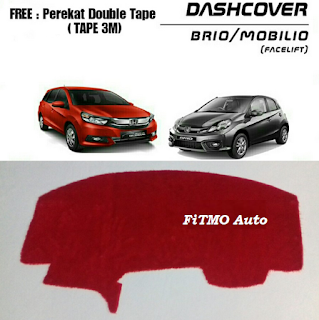Welcome to the land of the international car market. Welcome to the Toyota Innova, available worldwide under the imv platform, this new entrant in the Indian market, is also a new entrant in the world market. Cars such as the fortuner, Hilux also share the same bloodline, the IMV platform. Toyota has gone about their plan by making sure that components are either localized or manufactured in large numbers, both of which result in increased profits without any compromise on quality. Thus making sure that the product remains worthy of the Toyota brand. A brand associated with cars that are well worthy of outliving their owners. Not many cars of recent times have enjoyed the anticipation that the Innova has. It has replaced one of the best selling cars in the country. As a matter of fact, Innova seems to be the face of an all new mini van market, while also making sure that SUV, Taxi and sedan buyers take a close look
Coming to the car in question here, the Toyota Innova belongs to a breed of cars hardly seen in the market. The Innova is the fifth generation of the Toyota Kijang, while the outgoing model, the Qualis is two generations behind. It wishes to combine qualities like space and ruggedness associated with SUV's along with comfort and handling normally seen in high priced cars. An ambitious project, considering the fact that the Innova is here to replace the Qualis, a car that showed Indian manufacturers that quality works, even in a segment where most of the cars sold are used as taxis. Now that Toyota has decided to completely let go of the Qualis, we must have quite a car on our hands.
The fact that the Innova is 2 generations ahead of the Quails can easily made out at first glance. The Innovas contemporary design emphasizes the fact that it is designed to cater to the world market. The Innova doesn't feel like a compromise at all, it doesn't feel like those split personalities we encounter so often with cars in India. The clear ideas that emerged during the IMV project seems to have taken excellent shape, wheel arches are flared, but not pronounced enough to bother you, the car is high enough to dispatch of any speed bumps it might encounter, but well sprung enough that it could attack corners.
The Innova rides on a rigid tubular section chassis. It uses double wishbones with coil springs up front and the rear uses a non-independent suspension, with four links and a lateral rod with coil springs. The Innova is not available with a four-wheel drive option; need not be missed unless you wish to go for some serious off-roading. 15" tires add much character to the car and the wheel-well relationship couldn't have been better, not in India it couldn’t.
The real surprise though, is not outside. It’s the interiors of this new Toyota that will surprise you the most, Quality and feel never seen in its category. The interiors are essentially walnut finish and the seats are fabric the seats feel especially comfortable thanks to the good lumbar and under thigh support. A very thoughtful feature is the adjustable seat at the back, which can move back and forth. This feature can maximize rear seat space, especially if you are regularly driven around. Pockets integrated into the seats form perfect recesses for the seat belts and their clips to be tucked away. The Plastics used are of very high quality and will most definitely keep rattles at bay. The stereo is placed high for easy access and readability, an important safety feature skipped in most cars. Innovation seems to be the idea behind the entire design and engineering process.
The Innova is currently available with two engine options, The 2.0 litre 4-cylinder fuel injected petrol engine, featuring the VVT-i technology, in order to boost mileage and the more popular engine option, the 2.5 litres 4 cylinder turbocharged common rail direct injection diesel. Both mated to 5-speed manual transmission. We feature only details of the diesel engined version here, as the petrol version is yet to be tested.
The D4D motor was very impressive in terms of acceleration from standstill as well as roll-on, even when the temperature needle had barely started moving. Something that is still alien in most Indian diesels. If there was one word I can use to describe this diesel, its 'responsive'. Power is easily harnessed, and unlike other common rail diesels, the engine has lots of rev-range. The engine seems very relaxed and composed even at speeds just above 1300rpm and the torque seems relentless, all the way to 4500rpm, beyond which you do get a feeling of driving a diesel. Noise and vibrations associated with diesels seem to be from a bygone era, as far as this engine is concerned. Even low speed rattle, commonly associate diesel engines doesn’t enter into the passenger cabin.
The transmission is very well designed and is very capable of using the power of this diesel quite well. The gearshift is surprisingly short throw and the positioning of the shifter couldn't have been better. This car is capable of cruising with much composure, even at speeds exceeding 120Kph. The torquey engine also means that you need not shift too many times during your city runs.
Let me be very frank with you, I was unable to spend enough time with the Innova to really dig deep and see what this car is really made of, but during the short drive i was able to get, I was really blown away. This car really makes you believe that you will never go wrong with a Toyota.
Coming to the car in question here, the Toyota Innova belongs to a breed of cars hardly seen in the market. The Innova is the fifth generation of the Toyota Kijang, while the outgoing model, the Qualis is two generations behind. It wishes to combine qualities like space and ruggedness associated with SUV's along with comfort and handling normally seen in high priced cars. An ambitious project, considering the fact that the Innova is here to replace the Qualis, a car that showed Indian manufacturers that quality works, even in a segment where most of the cars sold are used as taxis. Now that Toyota has decided to completely let go of the Qualis, we must have quite a car on our hands.
The fact that the Innova is 2 generations ahead of the Quails can easily made out at first glance. The Innovas contemporary design emphasizes the fact that it is designed to cater to the world market. The Innova doesn't feel like a compromise at all, it doesn't feel like those split personalities we encounter so often with cars in India. The clear ideas that emerged during the IMV project seems to have taken excellent shape, wheel arches are flared, but not pronounced enough to bother you, the car is high enough to dispatch of any speed bumps it might encounter, but well sprung enough that it could attack corners.
The Innova rides on a rigid tubular section chassis. It uses double wishbones with coil springs up front and the rear uses a non-independent suspension, with four links and a lateral rod with coil springs. The Innova is not available with a four-wheel drive option; need not be missed unless you wish to go for some serious off-roading. 15" tires add much character to the car and the wheel-well relationship couldn't have been better, not in India it couldn’t.
The real surprise though, is not outside. It’s the interiors of this new Toyota that will surprise you the most, Quality and feel never seen in its category. The interiors are essentially walnut finish and the seats are fabric the seats feel especially comfortable thanks to the good lumbar and under thigh support. A very thoughtful feature is the adjustable seat at the back, which can move back and forth. This feature can maximize rear seat space, especially if you are regularly driven around. Pockets integrated into the seats form perfect recesses for the seat belts and their clips to be tucked away. The Plastics used are of very high quality and will most definitely keep rattles at bay. The stereo is placed high for easy access and readability, an important safety feature skipped in most cars. Innovation seems to be the idea behind the entire design and engineering process.
The Innova is currently available with two engine options, The 2.0 litre 4-cylinder fuel injected petrol engine, featuring the VVT-i technology, in order to boost mileage and the more popular engine option, the 2.5 litres 4 cylinder turbocharged common rail direct injection diesel. Both mated to 5-speed manual transmission. We feature only details of the diesel engined version here, as the petrol version is yet to be tested.
The D4D motor was very impressive in terms of acceleration from standstill as well as roll-on, even when the temperature needle had barely started moving. Something that is still alien in most Indian diesels. If there was one word I can use to describe this diesel, its 'responsive'. Power is easily harnessed, and unlike other common rail diesels, the engine has lots of rev-range. The engine seems very relaxed and composed even at speeds just above 1300rpm and the torque seems relentless, all the way to 4500rpm, beyond which you do get a feeling of driving a diesel. Noise and vibrations associated with diesels seem to be from a bygone era, as far as this engine is concerned. Even low speed rattle, commonly associate diesel engines doesn’t enter into the passenger cabin.
The transmission is very well designed and is very capable of using the power of this diesel quite well. The gearshift is surprisingly short throw and the positioning of the shifter couldn't have been better. This car is capable of cruising with much composure, even at speeds exceeding 120Kph. The torquey engine also means that you need not shift too many times during your city runs.
Let me be very frank with you, I was unable to spend enough time with the Innova to really dig deep and see what this car is really made of, but during the short drive i was able to get, I was really blown away. This car really makes you believe that you will never go wrong with a Toyota.
 RSS Feed
RSS Feed Twitter
Twitter






 Friday, February 25, 2011
Friday, February 25, 2011
 Samipodo
Samipodo

0 komentar:
Post a Comment